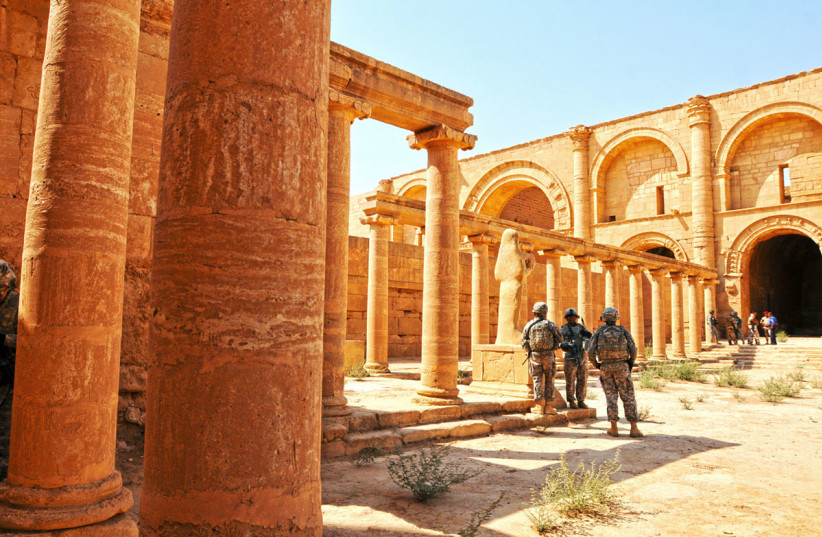Archaeologists have uncovered art revealing evidence of ancient hybrid camels, while restoring the Temple of Allat in the ancient ruined city of Hatra, which was vandalized by the Islamic State (ISIS) in 2015.
Hatra dates back to 2nd century A.D. and is located in the Al-Jazīrah region of present-day northern Iraq, about 290 km northwest of Baghdad and 110 km southwest of Mosul.
The temple was neglected for decades and "between 2015 and 2017, was harmed by intentional vandalism by religious extremists", according to a study in the Antiquity peer-reviewed journal of world archeology published by the Cambridge University Press.
A sculpted frieze on a lintel in the temple depicted camels which researchers previously interpreted to be eight Dromedary camels and two Bactrian camels. Dromedaries are known as Arabian or one-humped camels, while Bactrians have two humps and come from the Central Asian region.
Researchers noticed that the supposed Bactrian camel depicted lacks "the typical Bactrian body hair on the neck, forearms and head, resembling the nearby dromedaries." And the "humps of the camels are separated by a limited indentation, which matches that of many modern hybrids."

This finding gives us a better understanding of camel hybrid breeding practices and how they were utilized by the kingdom of this time.
Since ancient times, in various areas of the Middle East and Central Asia, hybridization between these two types of camels was practiced. This was done to create stronger and more valuable camels used “for trade caravans and military interventions”.
While researchers previously believed that "different types of camels were crossbred primarily in expansive empires", this new finding shows the "practice was much more widespread", CNN reported.
Researchers believe King Sanatruq I and his son added this artwork during a renovation in 168 AD. The imagery found "emphasized not only that the king had a vested interest in (perhaps even a monopoly on) the breeding of hybrid camels, but also in the management of the long-distance caravans of an ancient Silk Road" that strengthened the trading power of the kingdom. "The camels of the king, after all, are always the best."
This new study reveals that even this small kingdom practiced hybridization and was able to import Bactrian camels from Central Asia to breed with the dromedaries of Arabia, in order to produce a much stronger camel that could "expand the trade interests that made Hatra so rich."
One of the study's author, Professor Massimo Vidale said, "By appealing to Arab groups, the king made a serious step in the process of detaching Hatra from the shadow of the Parthian empire," according to CNN.
Hatra is the best-preserved and most informative example of a Parthian city, which was founded over 2,000 years ago and flourished during the 1st and 2nd centuries BCE. The city was designated a UNESCO World Heritage site in 1985.
In March 2015, the Islamic State destroyed many of the ancient city's remains according to Iraqi officials. ISIS said "shrines and statues are false idols that have to be smashed", the BBC reported.
ISIS destroyed many artifacts with sledgehammers and assault rifles. In a video, ISIS stated they would "continue their rampage against the country’s millenia-old history".
The former head of UNESCO, Irina Bokova, made a statement at the time saying, “The destruction of Hatra marks a turning point in the cultural cleansing underway in Iraq.”
Hatra continues to be restored and is funded by the Aliph Foundation, based in Geneva, and led by ISMEO in Rome.
